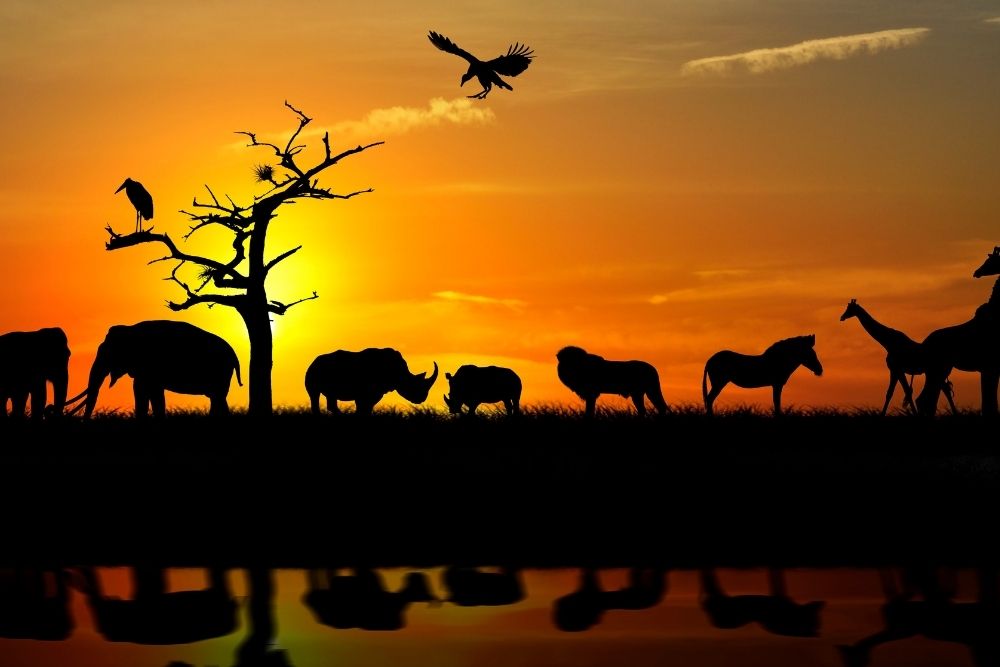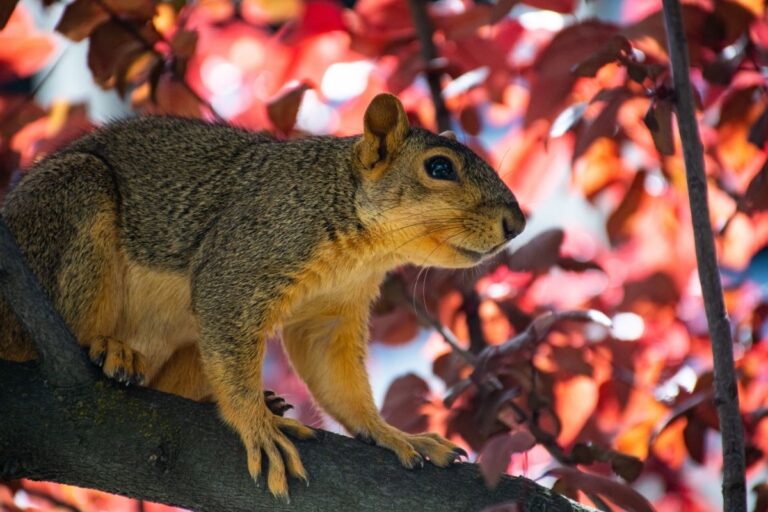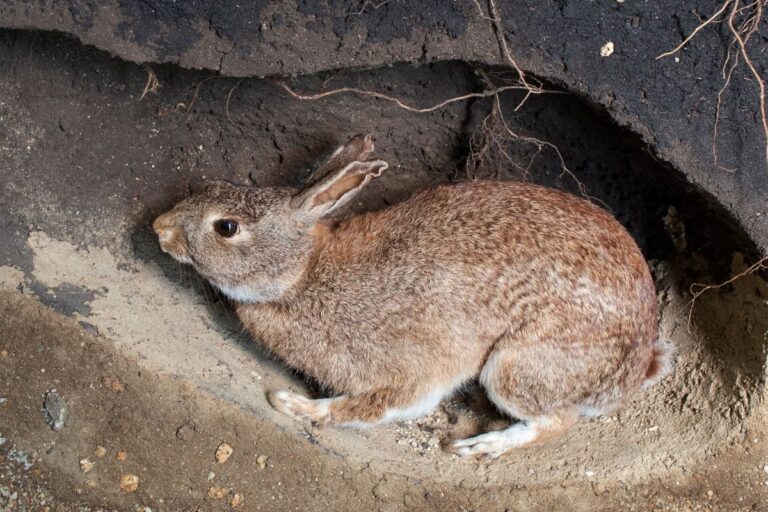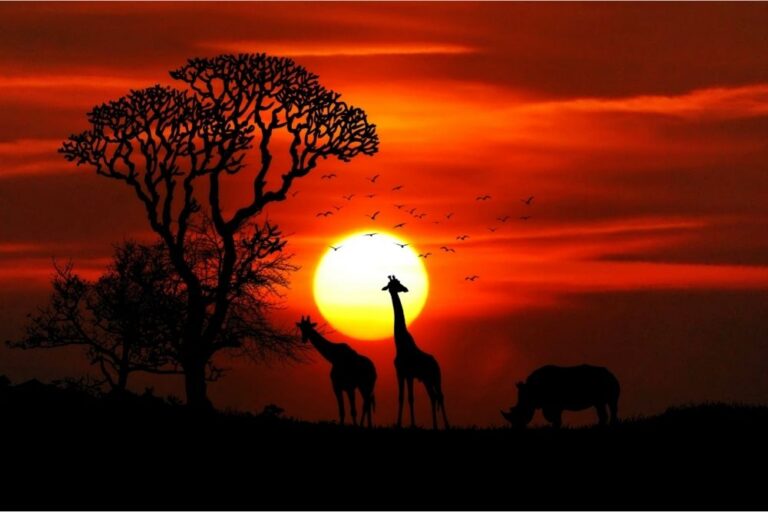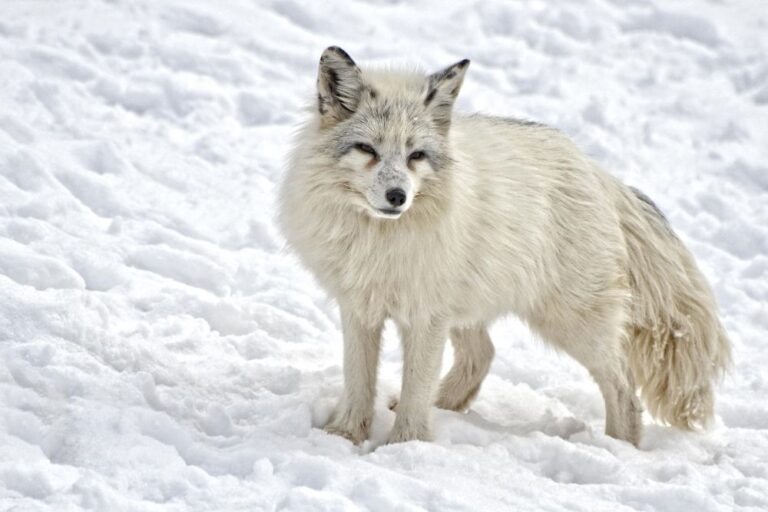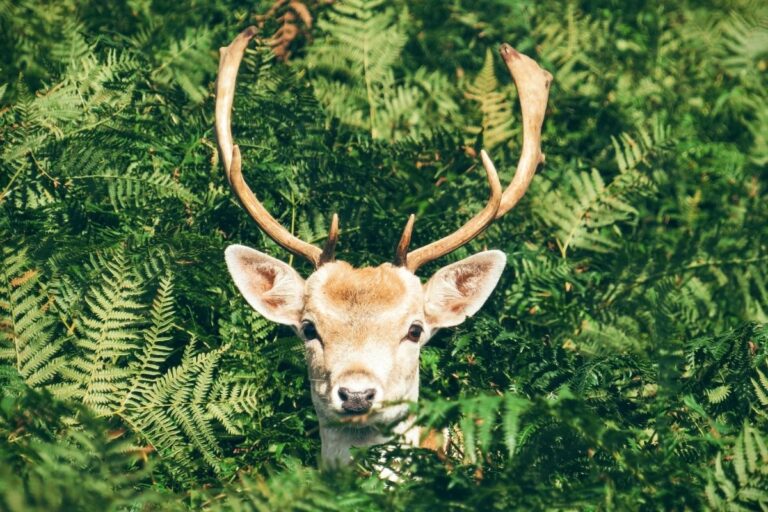Animals That Live In Africa
Last Updated on January 26, 2022 by
The world is full of incredible and fascinating animals. There are countless species of mammals, birds, fish, and insects that make up a vibrant ecosystem full of life.
Africa is home to some of the most interesting and iconic animals in the world, spread across this massive continent. While there are far too many different species to go over, this article will take you through a few of the strangest and greatest animals that live in Africa.
Africa’s Wild Animals
Giraffe
Giraffes are probably most well-known for their extremely long necks, which can reach lengths of up to 6 feet. They also have a recognizable pattern of brown spots.
Their neck isn’t the only surprising thing about giraffes – a giraffe’s tongue is almost 2 feet long, and is dark blue!
Zebra
It’s hard to imagine a more recognizable animal than the zebra. These stripy equines are primarily native to the African savanna, although they can also be found in mountainous regions of the south.
Zebras use their stripes to camouflage themselves in tall grass across the plains, as well as to regulate their temperature. And to answer your question – zebras are black with white stripes.
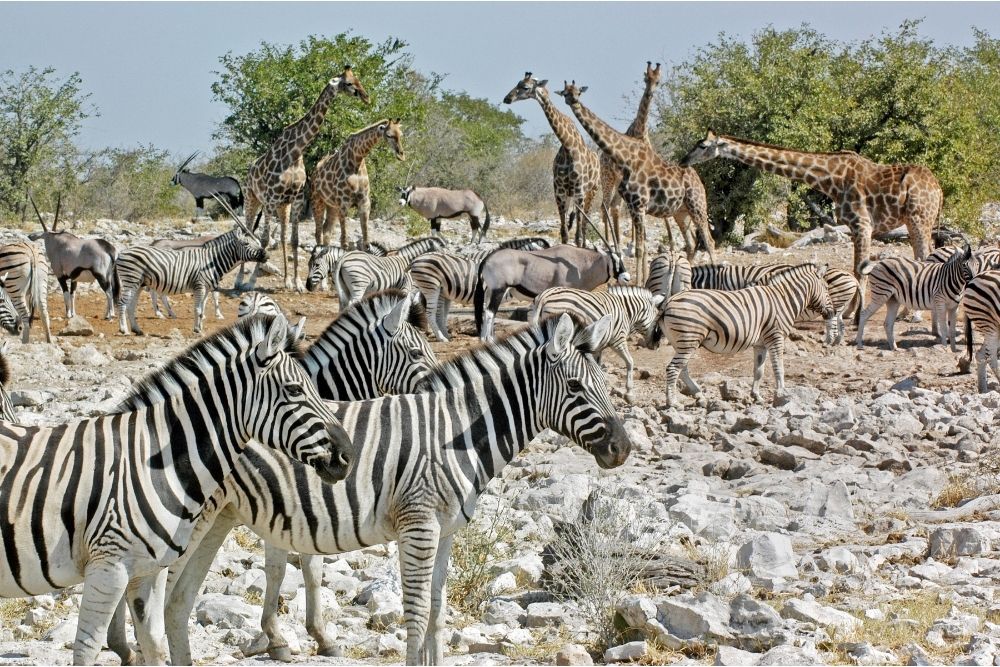
Black Mamba
There are few snakes as deadly as the black mamba. Just two drops of this snake’s venom is enough to kill an adult human, and a single bite can administer anywhere from 20 to 40 drops of venom.
While Africa is also home to the brightly-colored green mamba, these are less dangerous than the black mamba. That said, both species are incredibly dangerous.
Rhinoceros
The rhino is one of the ‘Big Five’ animals, which is the name given to the biggest and most dangerous animals in Africa. But while rhinos look intimidating with their thick hide and large horns, they are herbivores that are peaceful (for the most part). Rhinos are quite territorial, especially when it comes to protecting their young.
A rhinoceros’ most notable feature is the large horn at the front of their snout. This is prized by poachers for its value as decorations and medicine, so protective measures have been put into place to stop big-game hunters from taking a shot at these gentle giants.
Sadly, rhino numbers have taken staggering losses primarily due to poaching, and numbers of black and white rhinos are dwindling.
While conservation efforts are showing a promising increase in the number of rhinos, with only a few thousand rhinos left in the world it’s possible that there may be little-to-no rhinos left in the wild.
Lion
Although they are known as the ‘King of the Jungle’, lions primarily live in open plains where they can use their impressive speed and power to take down prey. This name likely comes from the meaning of the word jungle in Hindi, which roughly translates to ‘uninhabited place’.
Male lions are larger than females and have long, shaggy manes that they wear like crowns. Females, meanwhile, don’t have a mane at all.
Female lions are the primary hunters, although both male and female lions will team up to catch their prey. Lions are fairly social animals, and groups known as ‘prides’ will stay together and make sure that every member is fed their fair share.
African Elephant
These gentle giants are bigger than their Asian cousins and inhabit the bushes and rainforests of Africa. Known for their big ears, large tusks, and tactile trunks, African elephants are definitely one of the most iconic members of African wildlife.
Unfortunately, the number of African elephants in the wild has declined and they are now considered endangered. However, there are conservation efforts in place to improve their populations in the wild.
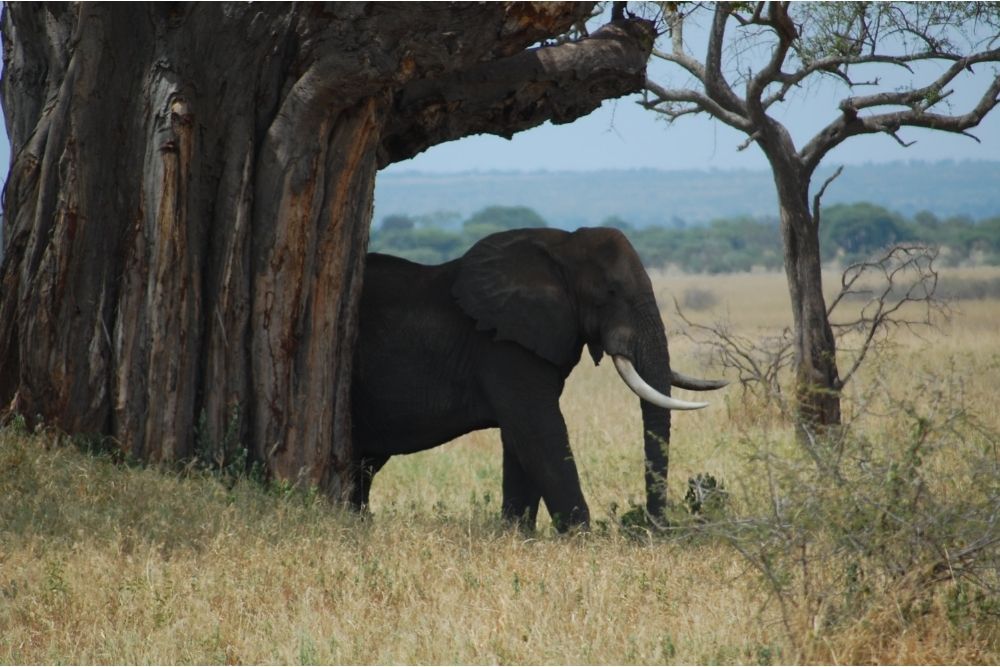
Wildebeest
The wildebeest, also known as the gnu, is a member of the antelopes family. But while other antelopes are small and elegant, the wildebeest most definitely isn’t.
Wildebeests are large animals with stocky bodies and big, square heads. They also have curved horns on the sides of their head, as well as a spiky mane that travels down their back.
Wildebeests live in massive herds, and migrations of wildebeests can involve thousands of them moving at once. In fact, during the Great Migration (a continuous migration of wildebeests and other species throughout the Serengeti and Masai Mara regions) herds of traveling wildebeests can even be seen from space!
Crocodile
While crocodiles inhabit several areas of the globe, Africa is home to some of the biggest and most aggressive species.
Nile crocodiles live in freshwater habitats across Africa, although primarily in the North-West in countries like Egypt. Nile crocodiles are the largest crocodile species in Africa, capable of reaching over 20 feet long! They are also extremely aggressive and strong and can take on pretty much any prey unfortunate to stop for a drink.
Ostrich
Who said birds have to fly? Try telling that to the ostrich.
These large flightless birds may not have the wings to go airborne, but they make up for this with incredible running speeds. Ostriches can run at speeds up to and exceeding 70km/h, and their endurance means that they can outlast you as well as outrun you.
Being able to run this fast means that ostriches have incredibly powerful legs. This is good for them, as they can use them to hunt the small lizards, snakes, and rodents that make up their diet.
An ostrich’s strong legs also help them defend themselves from predators – a single kick from an ostrich is powerful enough to kill a lion instantly!
Cheetahs
Cheetahs are the fastest mammal on the planet, as well as one of the fastest animals in the world. They are capable of reaching 100km/h in just 3 seconds from a standing start, which makes them formidable predators that are near-impossible to escape from.
Cheetahs have an incredibly flexible spine which allows them to get to these blinding speeds without damaging their body in the process.
However, this is balanced out by a lack of endurance, and cheetahs can only run at their top speeds for a few seconds.
Final Thoughts
So there you have it! While these are just some of the countless incredible animals that Africa has to offer, these examples just go to show how varied and colorful the different ecosystems across Africa can be.
We hope you enjoyed taking a look at some of the amazing creatures we share our planet with. Now you know a bit more about these animals, and just how strange and wonderful our world really is!

